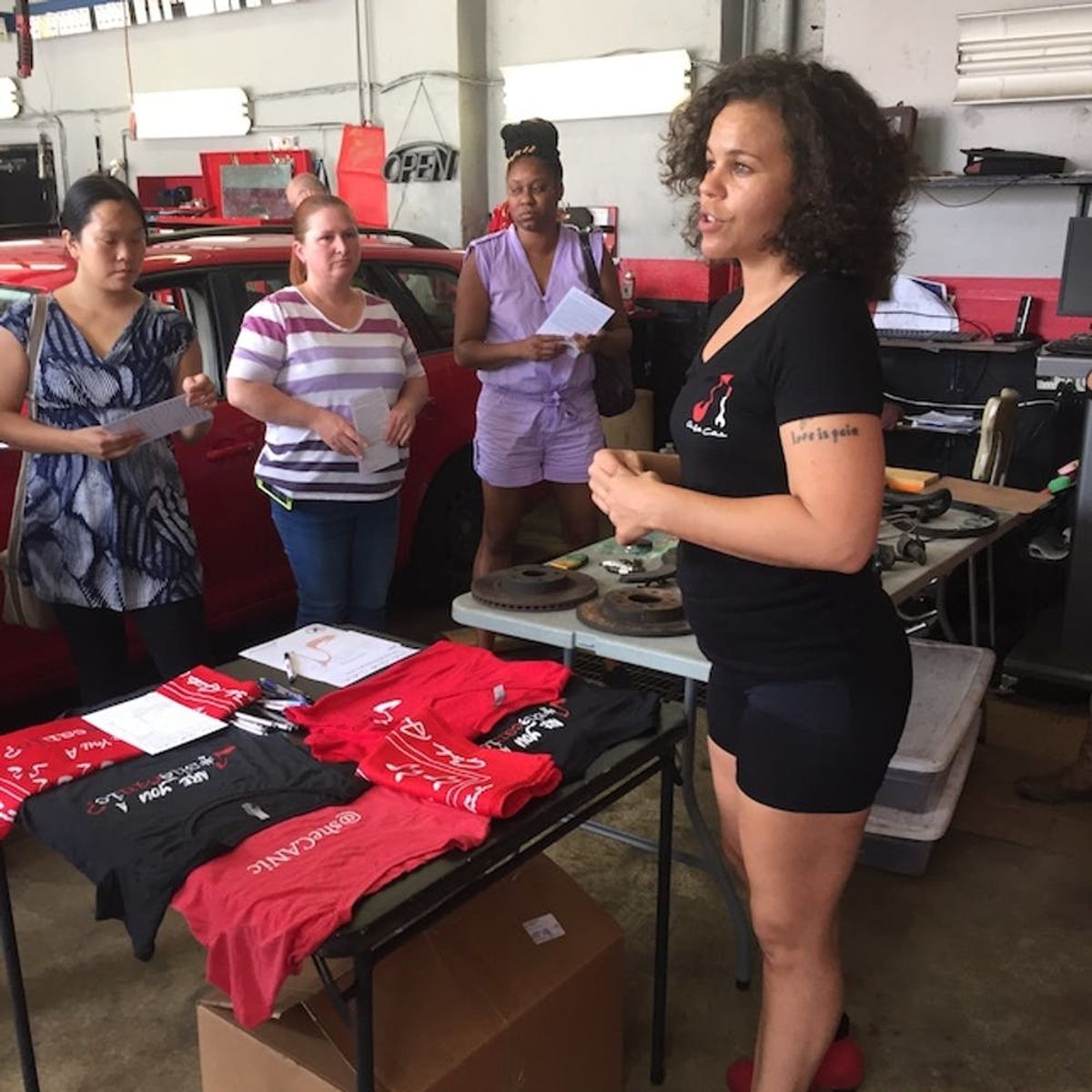Let’s get back to basics.
7 Car Tips Every 20-Something Should Know

Buying your very first car is an exciting adulting moment, but not one that’s easy. Even with expert insider tips on purchasing your ride or apps designed to make a car owner’s lifestyle easier, there’s still auto maintenance, gas costs, and the hassles of parking. We chatted with mechanic Patrice Banks, the owner of a female-driven auto repair shop in Philadelphia called Girls Auto Clinic and author of the book The Girls Auto Clinic Glove Box Guide, for her best tips on taking good care of your ride. Before becoming an auto mechanic, Banks worked at Dupont as an engineer. While searching for a female mechanic to work on her car, Banks discovered that despite the fact that most women own cars and drive, less than two percent of mechanics are women. Banks went to automotive school at nights and on weekends to learn how to repair her car. Eventually, she quit her engineer job to open Girls Auto Clinic. Here she shares tips to help you understand what your car needs to keep it running smoothly.
Banks’ Top Car Tips
1. Check your maintenance schedule. One simple way to maintain your car’s overall health is to grab your owner’s manual in your glove box and read it. Search for the maintenance schedule, which will give you the deets on oil change intervals, fluid flushes, and air filter replacement. Follow your manufacturer’s recommended schedule to keep things in tip-top shape.

2. Find a mechanic you trust. One study by Northwestern University found that women were routinely getting overcharged for car repairs from auto body shops as compared to men, so it can be hard to find the right mechanic. “A great way to find a mechanic is to ask for referrals from female friends. There are also online resources such as our #sheCANic facebook community, womenautoknow.com, or askpatty.com,” says Banks. You’ll know you’ve found your primary care technician when he or she can actually explain what they’re doing. “A great PCT should be friendly and patient, a good communicator and easy to understand, and understand the balance between urgent and non-urgent repairs,” says Banks.
3. Weatherproof your car. If you live in an area with inclement weather like snow, hail, heavy rains, or ice, Banks recommends you implement the following: “Make sure your battery is less than four years old. Car shops should have a battery test to determine your car battery’s life. Batteries typically last about five years and all batteries have a harder time in extreme temperatures,” says Banks. Check your tire tread, which should be at least 4mm thick. Replace worn wiper blades and refill washer fluid with a winter grade formula, which has a lower freezing point than summer-grade fluid. Lastly, if it’s snowing often, wash your car every two weeks to keep road salt from rusting it.

4. Get regular oil changes. “Oil is the lifeline of your car,” says Banks. “Your engine is full of fast-moving parts rubbing up against each other. Without the oil’s lubrication, the friction in the engine’s fast-moving parts produces so much heat, your engine will seize up, essentially killing it.” It’s worth it to shell out $40 for regular oil changes rather than $3,000 for an engine replacement.
5. Pay attention to the dashboard lights. In general, dashboard lights are color coded. Green or blue lights mean that features like headlights or cruise control are on. Yellow means “check on this issue soon,” and red dashboard lights mean that “something is happening that is causing damage to your vehicle or making it unsafe to drive,” says Banks. If any of these red lights come on — brake light, oil pressure, charging system, coolant, flashing check engine, or power steering — do not ignore them; get to a mechanic ASAP.

6. Keep a quarter tank of gas at all times. You shouldn’t wait until your gas is on empty to fill up. “Gas is held in a large tank at the rear of your car, usually under the back seat. To get fuel from the tank to your engine, your car uses a fuel pump. The fuel pump propels gas to your engine, but also uses the gas to cool it from overheating. If you are low on gas, there is less fuel to lubricate the pump, and it may burn out. If you wear out your fuel pump, your car won’t start. You will need a tow to a shop and the fuel pump replaced — not a cheap job,” says Banks.
7. Ignore these car myths. There are three car myths that Banks wants to dispel. First, you don’t need to change your oil every 3,000 miles. “Advances in technology and oil quality means that most new cars can be driven at least 5,000 miles before an oil change is required. The interval for your car can be found in your owner’s manual,” says Banks. Secondly, don’t top off gas at the gas station. “The pump is designed to turn off when the fuel reaches a certain level in the tank, and going above this level could cause damage to your car and pollute the environment.” Lastly, you don’t need to warm up your car before driving on cold winter days. “Any car made in the past 20 years won’t be hurt if you get in, turn the car on, and start driving,” says Banks. Though she does caution that if it’s crazy cold out (10 degrees Fahrenheit or lower), warming up your car for two minutes helps the oil to circulate through the engine.
Do you dread bringing your car to the mechanic? Tweet us @BritandCo to let us know if Banks’ advice helped you!
(Photos via Girls Auto Clinic)



















